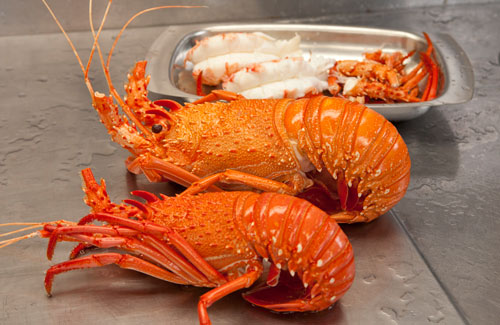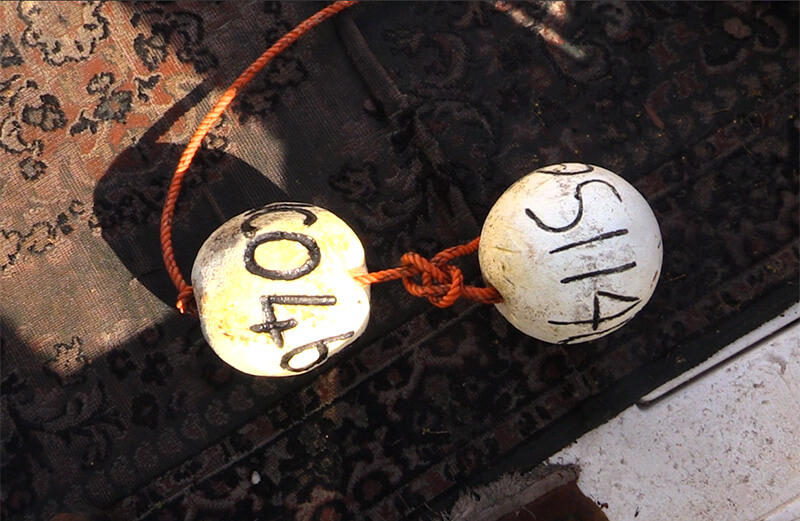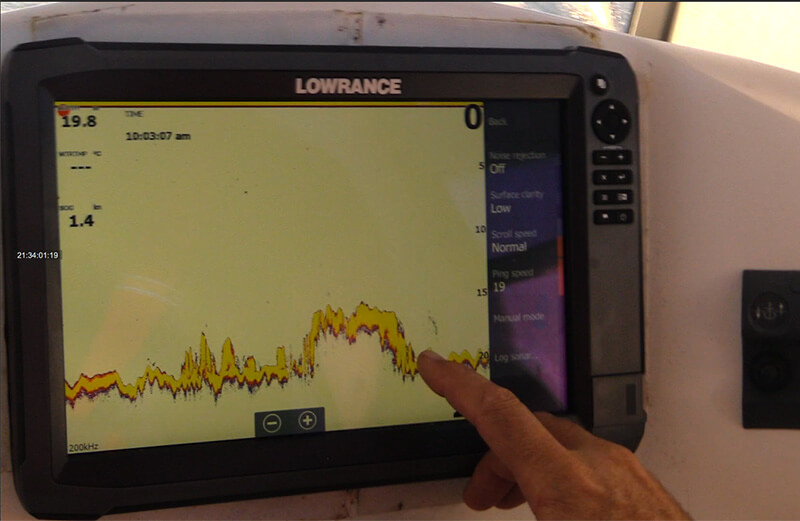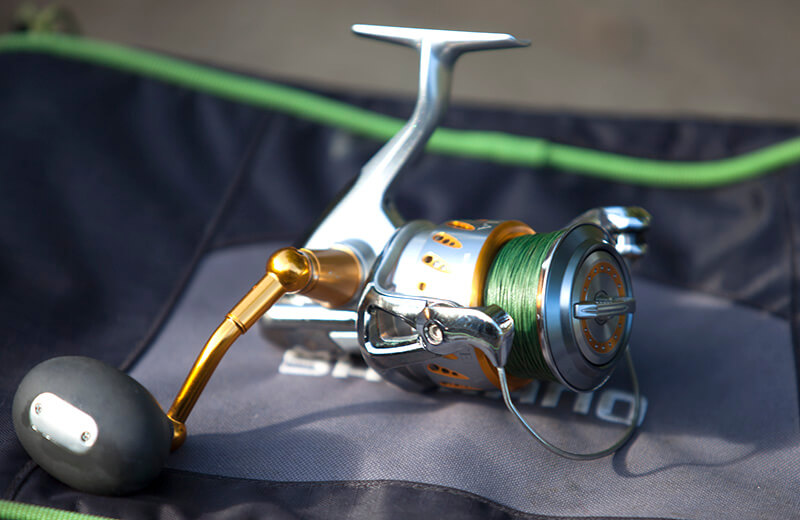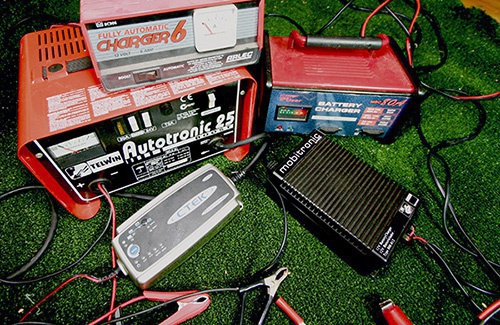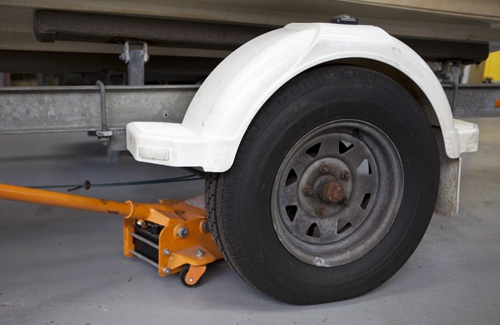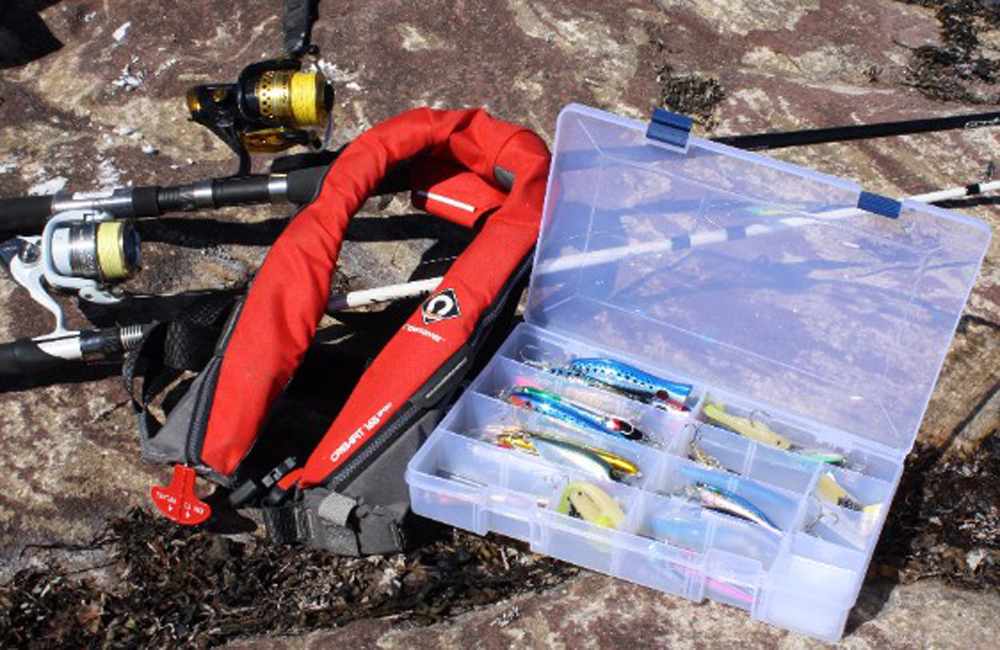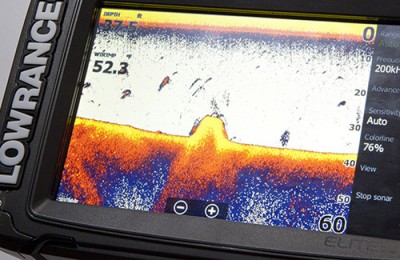In this article we’ll provide you with our top tips for potting for crayfish (rock lobster), including what materials you need, what bait to use and other handy tips to help you catch more crays this year.
Pot Selection
| Material | Pros | Cons |
|---|---|---|
| Timber | Build yourself Heavy Rarely move/roll over |
Expensive Take up room in small boats |
| Plastic | Cheaper Easy to set up |
Light, need extra ballast Will roll in rough seas |
| Metal | Pack down for easy storage | Light, need extra ballast |
Our Order of preference:
1. Timber
2. Plastic
3. Metal
Whichever pot you choose, they must not move when on the bottom. Heavy pots catch more crays.
What makes timber pots the best to use?
They catch more! (It’s what the pros use – so don’t re-invent the wheel)
A proven good design, including a wide base (same reason as above)
Heavy when waterlogged (which means they don’t move around on the bottom)
Easy to make or repair (especially on the boat)
Can scribe gear ID into frame (a growing practice to help with Pot ID)
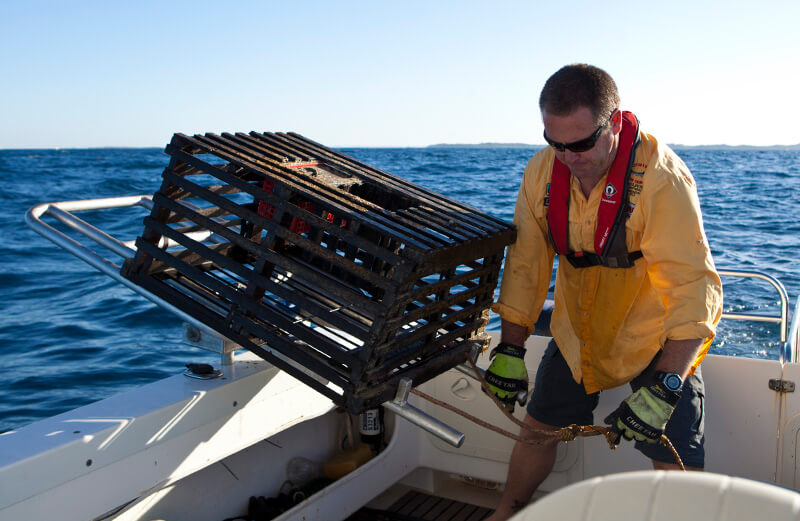
So, what then makes a good timber pot?
Hardwood frames: jarrah is best (some use pine)
Steel bases are good but require anode (to stop rusting)
Hardwood base is best – (and requires extra ballast)
Pine battens are fine (and can be easily replaced)
Make ‘em heavy
Purchase or build?
Building is cheaper, average about $50-$60 per pot (but does take time and you have to follow Fisheries pot specifications)
On average a good pot will cost about $200 to purchase
Pots can vary in quality, material and size – ask your local tackle store what they recommend and trust the experts.
Rigging Your Pots
To rig your pots successfully, you’ll need the following:
Rope – new pot rope requirements apply when fishing with a combined pot line and float rig length greater than 20 metres in length. Watch our video here to make sure your ropes comply.
Floats
Ballast
S.L.E.D. (Sea Lion Exclusion Device required in mid west and Abrolhos only)
A weight clipped on the rope half way down to ensure it hangs vertically in the top half of the water column
Rope
11mm ‘pot line’ is the rope you’ll need
How much Rope? Figure out the water depth + 20% extra
Second hand rope is cheaper and fine for recreational use
Floats
8 inch polystyrene float is ideal (don’t use old drums or bottles as floats). A maximum of two floats may be attached
to your pot.Bigger float = more drag, means your pot can move
Don’t go too big!
Ballast
20kg minimum, the heavier the better!
Railway plate works well and is easily accessible
Make sure to ballast at the hauling end of your pot
S.L.E.D.
This is a Sea Lion Exclusion Device
Only required in the mid west and the Abrolhos Islands
For more on these, check out the fisheries website for details
What Bait Should You Use?
Here’s a list of the different types of bait that work well.
Blue macks, tuna heads and orange roughy are all good
Frames and heads from most fish will work
Oily baits are great
Make sure it’s fresh!
Salted bait for holding, especially on 3+ day pulls
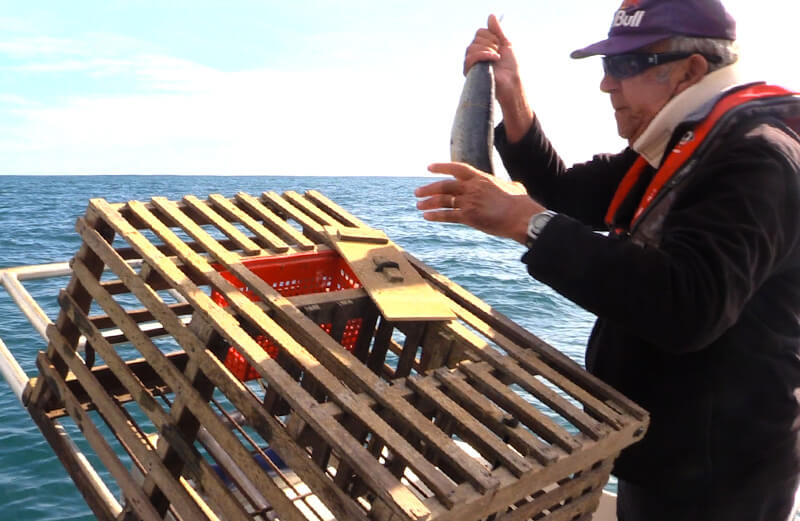
For ‘whites’ (moulted, lighter coloured crays that migrate or ‘run’)
On the sand (whites walk during the night and walk over sand)
Sand/weed edge
Keep fishing deeper (gradually progress into deeper waters)
Follow the migration westward
Set pots in an east/west line to track the migration
Face the hauling end opposite to the prevailing night time wind
This prevents the hauling rope blowing over the neck of the pot
A small weight attached half way down the rope will have the rope hang vertically, reducing cut-off’s from propellers
Cray fishing Safety
Got a life jacket? Wear it!
Can’t wear it? Get one that you can wear!
Pots are heavy, watch your back
Don’t stand in the bight of a rope
If your pot gets stuck, let the rope go
Wear gloves (for both pulling rope and handling the crays)
I’ve Caught Some Crays – Now What?
Check for eggs and tar-spot (as these crays are in their reproductive cycle)
Measure them – 76mm minimum legal length (get a gauge to be sure)
Clip or cut a portion of the tail flap (so Fisheries can determine rec vs commercial cray catches)
Keep your crays in an ice slurry (this will keep crays in best condition)
Re-bait your pots and do it all again tomorrow
Cray tails can now be stored at place of residence (it used to be only whole crays could be kept at home – but note you can’t transport the tails outside of your home)
Have fun and fish safe
Stay tuned for a great video on how to cook your crayfish!!!
